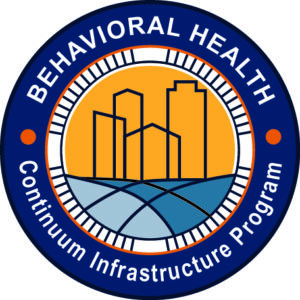Children and Youth
Frequently Asked Questions
Featured Questions and How to Use the FAQ
Questions and answers are grouped by funding opportunity. All responses are labeled either BHCIP, Joint RFA, or Children & Youth. This compilation is updated periodically.
For more information on the CCE program, including FAQs, please visit the program website.
Children and Youth Questions
Are mobile or portable units (school-linked) considered an eligible infrastructure project under BHCIP Round 4: Children and Youth?
- Arold Jacques
- | September 22, 2022
- | FAQ - Children and Youth
No. School-linked mobile or portable units are not eligible for Round 4: Children and Youth grant funding.
If we went through a pre-application consultation for Round 3 and are now also applying for Round 4, do we need to have a second pre-application consultation?
- Arold Jacques
- | September 22, 2022
- | FAQ - Children and Youth
Yes. Every round of BHCIP funding requires a separate pre-application consultation.
For Round 4, would a mental health rehabilitation center serving TAY be an eligible use of funds?
- Arold Jacques
- | September 22, 2022
- | FAQ - Children and Youth
No. The eligible facilities to be funded in BHCIP Round 4: Children and Youth include the following: community mental health clinics, community treatment facilities, community wellness/prevention centers, outpatient treatment for SUD, school-linked health centers, adolescent residential treatment facilities for youth with SUD, children’s crisis residential programs, crisis stabilization units, perinatal residential SUD facilities, psychiatric acute care hospitals, psychiatric health facilities, and short-term residential therapeutic programs.
When will the BHCIP Round 4: Children and Youth funding awards be announced?
- Arold Jacques
- | September 12, 2022
- | FAQ - Children and Youth
DHCS anticipates BHCIP Round 4: Children and Youth funding award announcements by December 2022. For information and updates, please visit the Round 4: Children and Youth webpage: https://www.infrastructure.buildingcalhhs.com/grantees/cy/.
Do facilities have to serve only pregnant/postpartum women under the age of 25 to be eligible for BHCIP Round 4?
- Arold Jacques
- | July 8, 2022
- | FAQ - Children and Youth
The focus of this round of funding is children and youth, including pregnant and postpartum women, because their behavioral health affects their children. Therefore, there is no age limit on this group of women; the only age limits relate to their children (range: 0-17 years old).
If our project is multi-faceted and very large with multiple beds for different populations, can we apply for Round 4 for the whole budget or part of it?
- Arold Jacques
- | July 8, 2022
- | FAQ - Children and Youth
BHCIP Round 4 is only available to fund the expansion benefiting the intended target population of children/youth for behavioral health services. If the project is scalable, you may be able to apply for future BHCIP rounds for other phases of your project if it serves the intended populations.
We do not have a site identified yet. Would our project be eligible for Round 4 without a site identified at time of submission? Part of our proposal and workplan would include identifying a site.
- Arold Jacques
- | July 8, 2022
- | FAQ - Children and Youth
No, a project without an identified site does not meet the minimum threshold requirements; therefore, it is not eligible for BHCIP Round 4: Children and Youth funding. See minimum threshold requirements in the request for applications (RFA).
Can you advise if Children’s Crisis Residential Programs (CCRPs) noted in the RFA is the same as Crisis Residential Treatment?
- Arold Jacques
- | July 8, 2022
- | FAQ - Children and Youth
Children’s Crisis Residential Programs are licensed by CDSS as a Short-Term Residential Therapeutic Program and have a mental health program approved by DHCS. Please refer to Section 3.3 in the request for applications (RFA) for a list of eligible facilities considered for BHCIP Round 4: Children and Youth grant funding.
If we have multiple departments (such as intensive outpatient hospitalization and a crisis stabilization unit) in a dedicated behavioral health building run by our hospital, would we need more than one application? If we also are planning a psychiatric emergency department in another location, could we submit this separately, even if it would mean three applications from the same organization?
- Arold Jacques
- | July 8, 2022
- | FAQ - Children and Youth
Applications for BHCIP Round 4: Children and Youth grant funding are site-based. For a project with more than one department located at the same site, only one application is necessary. An application for another site would require a second application. Organizations can submit more than one application as long as each application is for a separate, distinct site.

